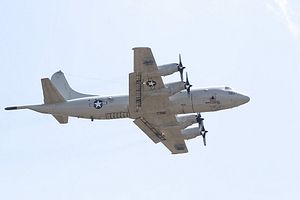The U.S. Navy, Republic of Korea Navy (ROKN), and Japan Maritime Self-Defense Force (JMSDF) have kicked off a trilateral anti-submarine warfare drill on April 4, U.S. Pacific Command announced in a statement. The three-day training is being held in the waters between South Korea and Japan near Jeju Island and is slated to conclude on April 6.
“The exercise will consist of: submarine search, fix, and tracking; high-value unit protection and anti-submarine defense maneuvers. The exercise is being executed on the heels of Exercise Foal Eagle 2017, an annual joint and combined field training exercise conducted by Combined Forces Command and U.S. Forces Korea components,” the U.S. Pacific Command statement reads.
The eight week-long Foal Eagle exercise, which began on March 1 will run through April and involves a series of several joint and combined field training operations conducted by U.S. and ROK air, ground, naval and special operations forces.
“The additional training will allow participants to enhance tactical maritime capabilities, strengthen cooperation, and improve shared situational awareness,” the statement adds. The U.S. Navy dispatched the Arleigh Burke-class destroyer USS McCampbell and a P-3 Orion anti-submarine warfare aircraft. ROKN is participating with a 4,5000-ton Chungmugong Yi Sun-sin class destroyer and a Westland Lynx helicopter. The JMSDF has sent an Asagiri-class general purpose destroyer.
“The anti-submarine training of the three countries is the first since it was discussed in their Defense Trilateral Talks (DTT) in December,” the ROK Defense Ministry said in a statement quoted by Yonhap News agency. The ROK government reportedly turned down the first offer for a joint anti-submarine warfare exercise last year in order to placate concerns of the People’s Republic of China.
The offer was made by the United States and Japan following the signing of the controversial General Security of Military Information Agreement (GSOMIA) by Seoul and Tokyo in November 2016.
In August 2016, North Korea test-fired a KN-11 submarine-launched ballistic missile (SLBM) from a submarine off its eastern coast near Sinpo—an indication that North Korea is working toward a sea-based nuclear deterrent. The Korean People’s Navy is reportedly also working on a new submarine, a significantly larger variant of the 1,650-ton (when submerged) Sinpo-class conventionally powered ballistic missile submarine (SSB) currently in service, which serves first and foremost as a test platform.
Next to building the new Sinpo-class SSBs, the Korean People’s Navy reportedly fields about “20 Romeo-class vessels, 1,800-ton diesel-electric subs based on 1950s Soviet technology; 40 domestically-built 370-ton Sang-O-class diesel-electric submarines specifically designed for the insertion of special operation forces into the South but also capable of laying mines and conducting anti-surface warfare; and approximately ten 130-ton Yono-class midget submarines,” I noted in 2015.

































